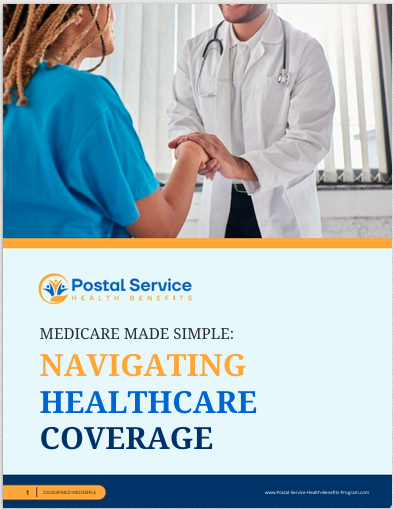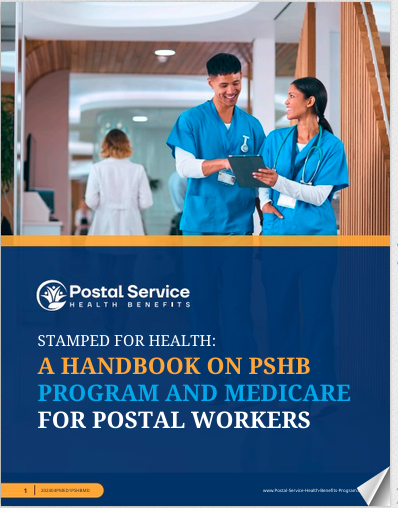Key Takeaways
-
Medicare Part B covers a range of medical services, but it does not cover everything. Understanding its limitations helps you avoid unexpected expenses.
-
Late enrollment penalties and income-related surcharges can increase your Medicare Part B costs. Knowing how to plan ahead can help you save money.
Understanding Medicare Part B: The Basics
If you’re a USPS employee or retiree, Medicare Part B plays a crucial role in your healthcare coverage once you reach 65 or retire. It covers a variety of outpatient medical services, but there are gaps that could leave you paying out of pocket. Knowing what’s covered, what isn’t, and how to manage costs can help you make informed decisions about your healthcare.
The Role of Medicare Part B for USPS Employees and Retirees
As a USPS employee, you may have health benefits through the Postal Service Health Benefits (PSHB) Program. However, once you retire or become eligible for Medicare, enrolling in Medicare Part B is important to maintaining seamless coverage. If you don’t enroll in Medicare Part B when first eligible, you may find yourself facing high medical costs or penalties later.
What Medicare Part B Covers
Medicare Part B primarily covers outpatient medical services and preventive care. This includes:
-
Doctor visits – Whether you’re seeing a primary care physician or a specialist, Medicare Part B helps cover the cost.
-
Preventive screenings – Routine screenings for conditions like cancer, cardiovascular disease, and diabetes are covered.
-
Diagnostic tests – Blood tests, MRIs, CT scans, and other diagnostic procedures are included.
-
Outpatient hospital care – This covers procedures and treatments that don’t require an overnight hospital stay.
-
Emergency ambulance services – If medically necessary, Part B covers transportation to a hospital or skilled nursing facility.
-
Mental health services – Covers therapy, counseling, and psychiatric evaluations.
-
Durable medical equipment (DME) – Items like wheelchairs, walkers, oxygen equipment, and CPAP machines.
-
Some home health services – Skilled nursing care, physical therapy, and occupational therapy at home when prescribed.
-
Vaccinations – Includes flu, pneumonia, hepatitis B, and certain other recommended vaccines.
-
Telehealth services – Virtual visits with doctors and specialists are covered under certain circumstances.
Expanded Benefits in 2025
-
Chronic care management – Includes services for those with multiple chronic conditions requiring continuous medical attention.
-
Behavioral health support – More coverage for mental health services, including group therapy and substance use disorder treatment.
What Medicare Part B Doesn’t Cover
While Medicare Part B provides essential coverage, it does not pay for everything. Here are some key services that fall outside its scope:
-
Prescription drugs – Part B only covers a limited number of medications administered in a clinical setting. Routine prescriptions require separate drug coverage.
-
Routine dental, vision, and hearing care – Checkups, eyeglasses, hearing aids, and most dental work are not included.
-
Long-term care – Nursing home stays and assisted living facilities are not covered.
-
Cosmetic procedures – Elective surgeries and cosmetic treatments are excluded.
-
Alternative therapies – Acupuncture (except for chronic lower back pain) and other alternative treatments are typically not covered.
-
Overseas healthcare – Part B generally does not cover medical care received outside the U.S.
-
Non-medically necessary services – Any treatments or procedures that Medicare does not deem essential for health improvement.
How Much Does Medicare Part B Cost in 2025?
As a USPS retiree or employee nearing retirement, understanding the costs of Medicare Part B is crucial. In 2025, the standard monthly premium is $185. However, this amount may be higher based on your income.
Other Costs to Consider:
-
Annual deductible – You must pay $257 out of pocket before Medicare starts covering services.
-
Coinsurance – After meeting your deductible, you typically pay 20% of the Medicare-approved amount for covered services.
-
IRMAA (Income-Related Monthly Adjustment Amount) – Higher-income retirees may pay additional premiums.
How to Lower Your Medicare Costs
-
Consider Medicare Savings Programs – If you qualify based on income, you may receive help paying for Part B costs.
-
Enroll in a plan that coordinates with PSHB – Some USPS retiree plans help cover Part B costs.
-
Use in-network providers – Staying within Medicare-approved networks can lower out-of-pocket expenses.
Avoiding Extra Fees and Penalties
There are several ways you could end up paying more for Medicare Part B. Avoiding these common pitfalls can help you save money.
1. Enroll on Time to Avoid Late Penalties
If you delay enrolling in Medicare Part B when you’re first eligible, you may face a 10% penalty for each full 12-month period you go without coverage. This penalty is permanent, meaning you’ll pay more for Medicare Part B for the rest of your life.
-
If you’re still working for USPS and have employer coverage, you may delay enrollment without penalty.
-
If you retire at 65 or later, sign up within the Special Enrollment Period to avoid penalties.
2. Plan for Income-Related Monthly Adjustment Amount (IRMAA)
Higher-income retirees pay more for Medicare Part B through an Income-Related Monthly Adjustment Amount (IRMAA). In 2025, if your modified adjusted gross income (MAGI) exceeds $106,000 as an individual or $212,000 as a couple, you’ll pay an extra surcharge on your premiums.
How USPS Retirees Can Manage Healthcare Costs
If you’re a USPS retiree, coordinating Medicare Part B with your Postal Service Health Benefits (PSHB) plan is essential. Many PSHB plans work with Medicare to reduce out-of-pocket costs, such as covering Part B premiums, reducing copayments, and waiving deductibles.
Here are some strategies to maximize your benefits:
-
Review your PSHB plan’s coordination with Medicare – Some plans offer incentives for enrollees who have both Medicare and PSHB.
-
Use preventive care benefits – Medicare covers many screenings and preventive services at no additional cost.
-
Consider supplemental coverage – Depending on your health needs, a Medicare Supplement plan could help cover what Medicare Part B doesn’t.
-
Compare plan options annually – Your healthcare needs may change, so reviewing your Medicare and PSHB options regularly ensures you have the best coverage.
Making the Right Choice for Your Healthcare
Choosing when and how to enroll in Medicare Part B can impact your long-term healthcare costs. Whether you’re still working for USPS or retired, understanding your options can help you avoid unnecessary expenses.
To make the most of your Medicare benefits, it’s always a good idea to talk to a professional. For personalized guidance on Medicare and USPS retiree benefits, reach out to a licensed agent listed on this website.







